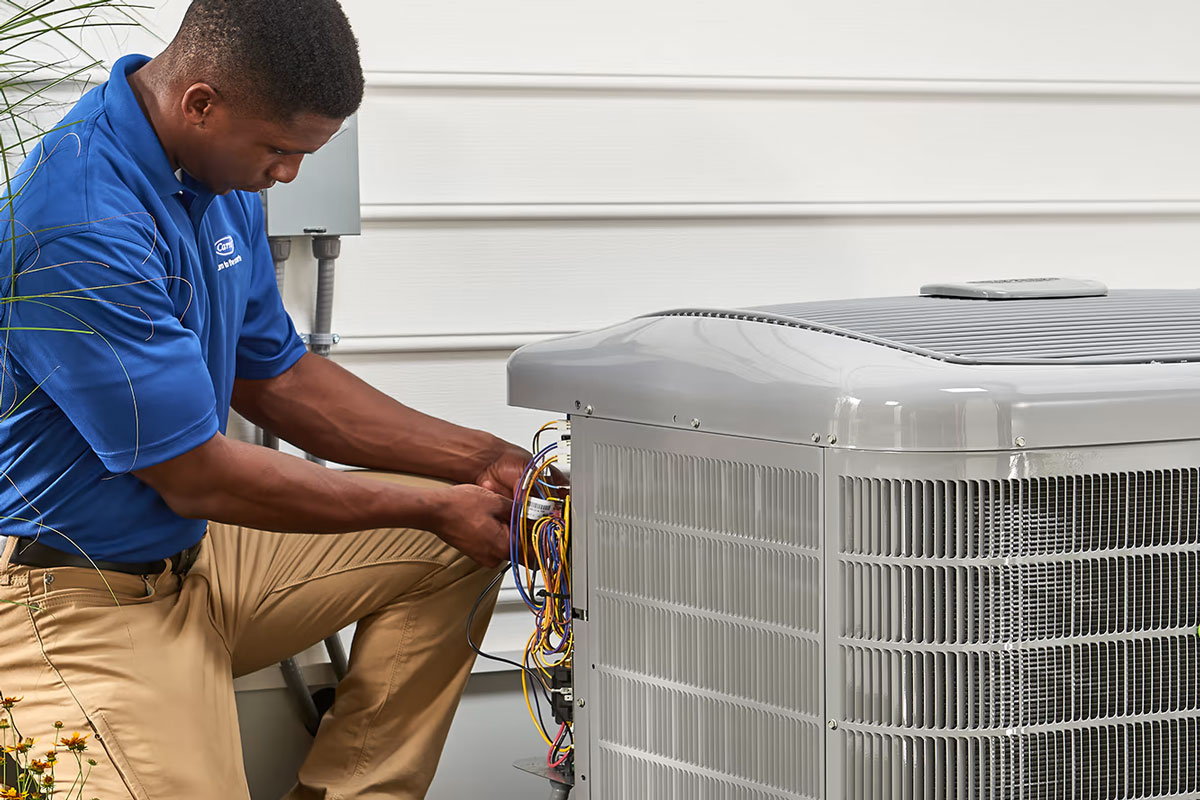The heat pump is an element of the house heating and cooling unit and is established outside your house. Like central air, it can cool your house, though it can also make heat. In the freezing periods, a heat pump pulls heat out of the cold air and moves it inside, and in the warmer periods, it pulls the heat out of the inside air to chill your house. They run on electricity and move heat utilizing a refrigerant to make year-round convenience. Since they provide both cooling and heating, you may not require to establish independent systems to heat your house. In colder conditions, an electric heat strip can be used for the indoor fan coil for extra functionality. As heat pumps do not use fossil fuels like furnaces, they are environmentally friendly. The two most typical classes of heat pumps are air source and ground source. Air source heat pumps move heat between inside and outside air and are more prevalent for heating and cooling buildings.
Heat pumps do not produce heat and they move heat from one location to another. A furnace produces heat that is circulated within the home, while a heat pump absorbs heat from the outside air and moves it to the inside air. If in cooling mode, a heat pump and an air conditioner are functionally similar, absorbing heat from the interior air and removing it through the exterior unit. When evaluating which type of system is most suitable for your house, there are many essential aspects to consider, including home dimensions and local weather.
- Heat transfer and air source heat pumps
One of the most typical classes of heat pumps is the air-source heat pump. These take heat from the outdoors and pump it indoors through cooling coils, not much more distinct than what’s behind your fridge. The air source combination is rather simple, there are two fans, refrigeration coils, a check valve, and a compressor within to run it. The important point for cooling the air source heat pump is the reversing valve. This adaptable element reverses the refrigerant flow so the unit can work in the opposing path. So rather than pumping heat into the house, the heat pump removes it, just like an air conditioner. When the refrigerant switches, it soaks heat inside the unit and flows out. This is where the heat is removed, permitting the refrigerant to cool again and flow back in to absorb more heat. This procedure duplicates until the house is pleasant and cool.
Air source heat pumps utilize an outside fan to move air to the refrigerant coils. Two groups of these coils transfer this heat into the house, and then a second fan pulls it away from the coils and circulates it throughout the house. Some air source heat pump systems have a packaged unit that includes both collections of coils in one pack. Then this package is established on the roof, and a channel is drawn through the wall. Many bigger systems for commercial towers have been installed in this form.
- Ground source and absorption heat pumps
Ground source heat pumps are a bit distinct. They absorb heat from the ground or underground water and move it inside the house or vice versa. The most typical class of ground source heat pumps moves heat straight from the ground by soaking it through buried tubes filled with water or refrigerant. These liquid pumping tubes can be closed-loop or open-loop designs, and they work almost exactly as they express. In a closed-loop system, the exact refrigerant or water distributes through the tubes frequently. In an open loop system, water is drawn out from an underground water source such as a well or man-made lake. From there, the heat is removed from the water, and that water backs to the surface well or lake. More water is then drawn out from the well to drag more heat in a constant open loop.
- Other kinds of heat pumps
If your home doesn’t contain air ducts to circulate heat, don’t panic. You could utilize a particular type of heat pump named a mini-split heat pump. It links one exterior air source unit to numerous interior units. These interior units are linked to a water heater or room heater. These ductless mini-split systems are beneficial for retrofitting a house with a heat pump system as their places are adjustable, both indoors and outdoors. Another advantage is that the facility only needs a 7.6 cm conduit to pass via the wall, which is hidden. They are also adaptable. Indoor air handlers can be established in walls, roofs, or on the floor and are miniature to set up. However, a drawback is that the installation need take up some internal room to work. They are most satisfactory for small residential and commercial rooms.
Although many heat pumps depend on air, the Reverse Cycle Chiller (RCC) structure pumps water instead, permitting it to work more effectively in cold temperatures. In an RCC system, the heat pump is linked to a water tank that warms or cools it. Besides, a fan and coil unit pumps warmed or cooled air away from the tank and via ducts to one or more heating areas. An RCC system can even pump hot water via a radiant floor heating design. In a standard air source heat pump, a backup burner is needed to provide quick heat when the system goes into reverse to defrost the coils. This backup burner stops the unit from moving cold air while defrosting the coils, which is important if your plan is to remain warm. Some believe that the RCC system is best in that it utilizes hot water from the tank to defrost the coils, and no backup burner is required. It also indicates the unit never moves cold air when it is not needed, and the outcome is you remain pleasant and warm.

